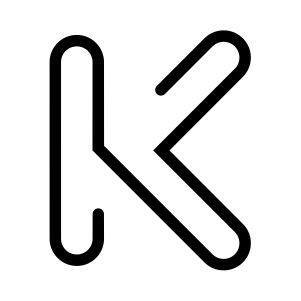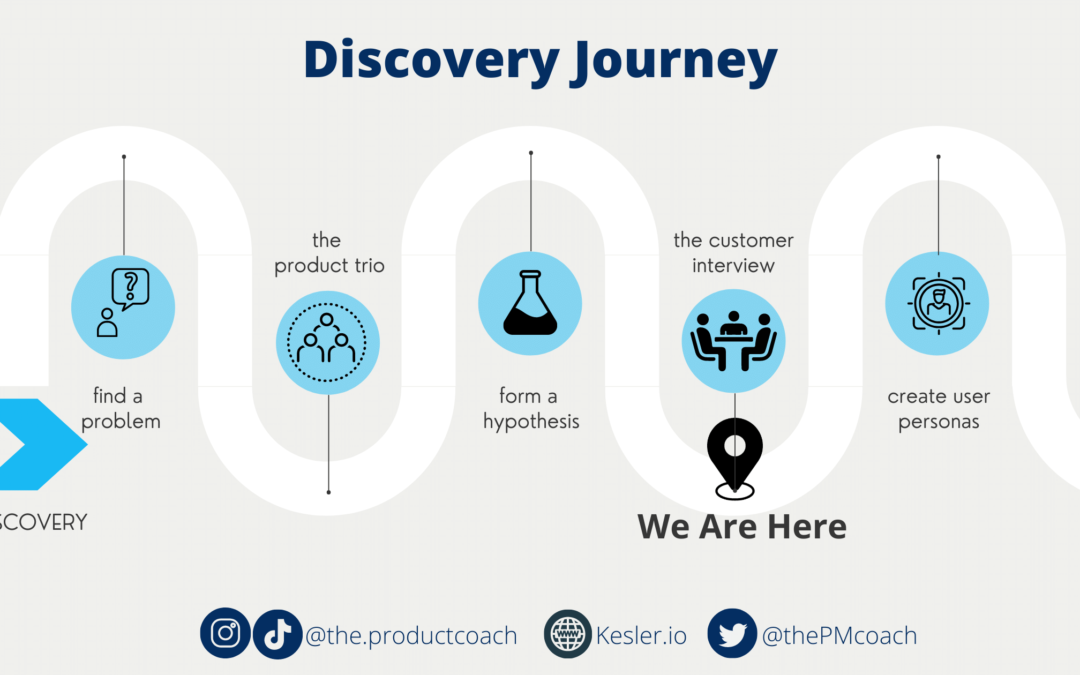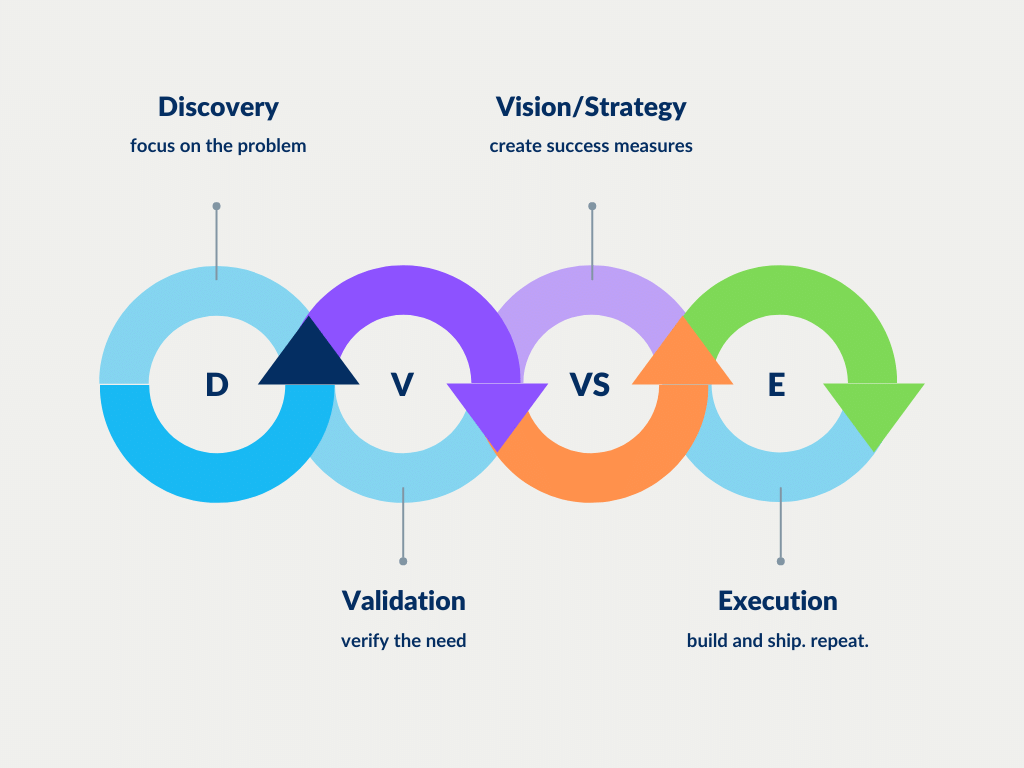So now that we have our product trios and our hypotheses we can interview some current customers or potential customers. In this article, I’ll give you all of the tactics I use in a customer interview. If you’ve never interviewed a customer before or if the company you’re at doesn’t interview their customers as part of their discovery process, I know it seems like it can be daunting. My goal with this article is to prepare you for each potential “what if” scenario and help you guide the conversation. Customer interviews for me are perhaps the most fun thing I do at work, and I want you to feel that same way. With that, let’s dive in!
Prepare for the interview
What we want to do here is create a rough script of how we see the interview flowing. We can’t script a natural conversation, but we can think about how we want that conversation to flow to get what we need out of it. We’ve already done a lot of the prep work, let’s make sure we have our hypotheses easily accessible, and our questions based on our hypotheses ready. How do we structure our questions based on our hypothesis? I’m glad you asked. Let’s look at one of our hypotheses from the last post below:
Hypothesis: Landscaping companies have trouble scheduling their teams after they grow to a certain size.
Questions to ask:
- How big is your team and is scheduling your team a problem for you?
- If it’s a small team and no problem scheduling move on to the next question
- If it’s a big team and scheduling is a problem:
- How do you currently schedule them?
- What software do you use to schedule them?
- If excel:
- Can you show me the spreadsheet and walk me through it?
- Have you looked into other solutions?
- If excel:
- How many hours do you spend scheduling your team a day/week/month?
- I also like to ask some variation of how desperate are you for a solution to this?
- Like:
- If I gave you three wishes you could use to eliminate part of your job would you use one on this?
- Why or why not, and what would you use the other two wishes on?
- Like:
As you can see one hypothesis can open a plethora of questions and they do follow a sort of script-like format. If they don’t have the original problem that we hypothesized about move on to the next and use the same slew of questions. Interview strategy and tactics ow as the interview goes on, when we ask a question like “how do you currently schedule them?” I’m never ok with the first thing they say. I want to understand the full process as if I was going to take their place and take over scheduling for that. In other words, I get extremely curious about the job they’re trying to get done and all the tasks associated with it. In the next section, I’ll cover some ways to keep the customer talking and how we can dive deeper.
6 tools to keep the customers’ problems at the center of the conversation
- Tell me more…
- Go on…
- What have you tried to do to solve x?
- The Five Why’s
- What do you do after that?
- Remain Silent
This list might look familiar from the first post in this series about finding a problem and that’s because the tactics work the same way. You’re trying to get to the root of their problems, jobs, tasks, etc. to figure out how much they need this solved and how you can add the most value to them. I could write entire posts on these 5 tactics alone and in my book (launching later this year 2022), I go into more detail, but to keep it short and sweet I’ll briefly go over them below.
1 & 2. Tell Me More and Go on…
This shows that you’re listening and you want more detail about a specific thing they’re talking about. For instance going on with the example above, if their response to how they currently schedule their team is “Oh I just use an excel spreadsheet.” One could ask, interesting, tell me more about that… how do you fill that spreadsheet out? and they may say, “I have one column for each team member, one column for each day of the week and I use Google Maps to figure out where they should go.” After this, you could say a simple “go on…” in which case they might tell you more about how they use Google Maps in their process or scheduling in general or you could ask them to tell you more about how they use Google Maps.
3. What have you tried to do to solve x?
This is a great question to begin to determine how desperate they are to solve this problem. This question also pairs well with “tell me more…”, “Go on…”, and the five why’s.
4. What do you do next?
With this question, we’re trying to figure out the next step they take in the current job they’re trying to get done. When we start formulating our Customer Journey Maps this question will help us break down each task along the way so that we can pick which ones we want to solve for and prioritize. Going with the example above, if the landscaping company owner told me how they currently schedule their employees, I could ask what do you do after you schedule them? They might say they email the schedules to their team. This opens a new line of questioning, where I might ask them to tell me more about what these emails include.
5. The Five Why’s
I went over this in my first entry in the series: Discovery Step 1: Struggling to find customer problems? Never stop being curious, but this is where you ask why five times in hopes to get to the root of their problems. I do try to change up how I ask my why’s by throwing in an “oh interesting, why is that?” or a “hmm why do you think that is?” here and there.
6. Remain Silent
This is perhaps my favorite tactic because it’s so undervalued. Many product managers I have worked with tend to fill the silence with their thoughts and ideas. This is because everyone is uncomfortable with silence. Good product managers observe and let their customers do the majority of the talking. Remaining silent is one of the best things a product manager can do in a customer interview. Let’s let the customer fill that silence. One of my favorite TV shows is a miniseries called The Night Manager with Tom Hiddleston and Hugh Laurie, if you haven’t seen it I highly recommend it. In it, someone says to Tom Hiddleston’s character “You see everything, and say nothing.” This is how we get the most important information. The customer talks and the product manager listens, observes, and questions.
Conclusion
The key to any customer interview is curiosity. When we’re curious, the conversation and questions we ask flow naturally. Give yourself total permission to be curious and learn about your customers. I hope you now feel prepared for your customer interviews. Let me know either by message, comment below, or LinkedIn how they go! I am very interested to hear how these tools work for you. And, If I can be of service, let me know. In the next post, we’ll talk about collecting the pain points and notes we’ve gathered from customer interviews and forming them into a persona or multiple persona’s.



Recent Comments